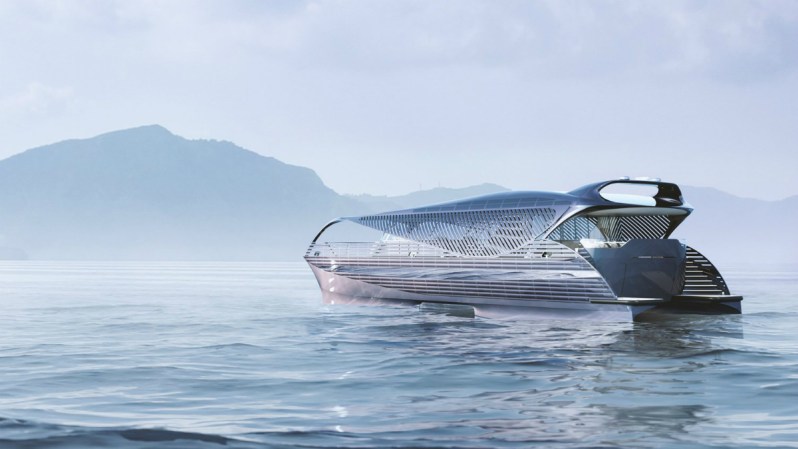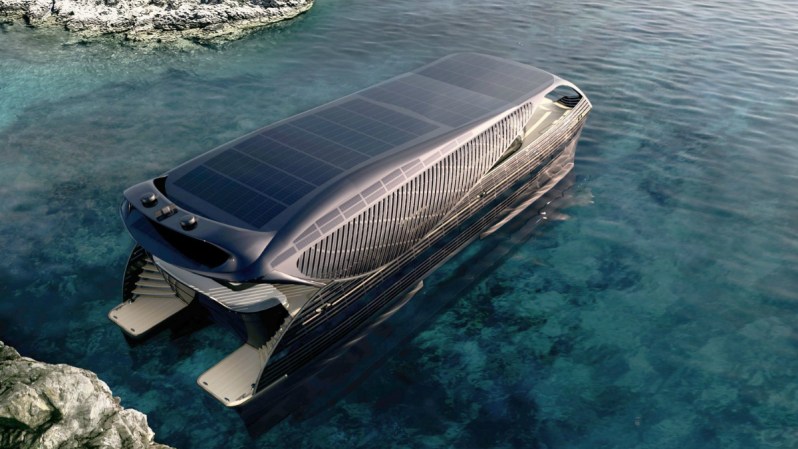Boats (in general) and cruise ships (in particular) are among the least environmentally-friendly modes of travel that currently exist. While clever innovations have been made in the way of electric boats and renewable-energy-assisted ships, we have a long way to go before the industry can be considered “green.” But, a newly unveiled solar-powered ship has the potential to chart a much brighter course for the future.

Swiss marine innovators Solar Impact debuted the aptly named Solar Impact Yacht at this year’s Cannes Yachting Festival. Under ideal, sunny conditions, the 78-foot all-electric boat has the potential to traverse the globe without stopping. This is accomplished through a 3,200-square-foot solar array that blankets the hull, generating up to 320kWh on a sunny day. These power an 800kWh battery with the capacity to run the ship for up to 10 hours in a single day. While this would mean dialing the cruising speed down to a leisurely 5 knots (that’s 5.7 miles per hour for you non-sailors), the ship is capable of a maximum speed of 22 knots.
The 70-ton hull uses lightweight, state-of-the-art aluminum construction to reduce weight. The exterior design also helps limit heeling and rolling in the water by up to 90%. Even in strong waves and currents, the ship’s stability ensures a relatively smooth, comfortable ride.

But, the Solar Impact isn’t meant to be merely a statement piece on the owner’s environmental awareness. Because it can run for extended periods — possibly indefinitely — the designers put a good deal of thought into the ship’s creature comforts. While the final details have yet to be confirmed, the latest virtual reality tour reveals a sleek, ultra-luxe, minimalist cabin design that feels plucked from Blade Runner 2049. The central onboard computer system is also powered by sophisticated AI software to control everything from lighting to electrical to propulsion.

The idea of a solar-powered yacht is nothing new. In 2016, the Solar Wave debuted to surprising demand. Plus, hybrid yacht designs are now greener and more affordable than ever, which is further proof of the viability of commercial solar-powered yacht models.
There is no pricing or official release date for the Solar Impact Yacht as it’s still in the early concept phase. But, frankly, if you have to ask …
Editors' Recommendations
- World’s First Luxury Space Hotel Promises Climbing Wall, Low-Gravity Basketball Courts
- Get Paid to Live on Luxury Yachts for a Year with HushHush


